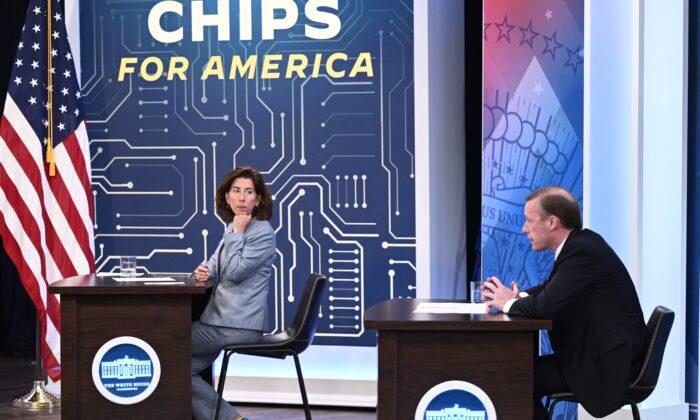If Donald Trump first made clear that China is a competitor, not a partner, as was previously claimed, the Biden administration has escalated the contest tremendously.
Trump began the change in U.S. policy when in 2018 he imposed heavy tariffs on Chinese goods and demanded that Beijing alter its trade practices. In more recent years, under Biden, the contest has come to involve American export controls, restrictions on investment flows, and visa limits. The recently passed CHIPS for America Act adds subsidies for domestic U.S. production of semiconductors to the mix.
The latest step in this battle involves the Bureau of Industry and Security (BIS). Through this otherwise obscure Washington bureau, the United States aims to limit China’s access to advanced semiconductors, chip-making equipment, and supercomputer components.
Looking back from these latest moves to the flap that surrounded the Trump tariffs shows how far and how fast elite American opinion has moved against China and globalization in general.
Certainly, Trump’s tariffs look tame compared to where U.S. policy has gone since. Yet, there is much less controversy about what is happening now than there was four years ago when the tariffs began to go into place. Back in 2018, some of the tariff criticism argued that the levies would hurt the American economy more than they would China’s. That claim was always dubious since sales in America are much more important to China than Chinese products are to Americans.
More telling in the environment of 2018 were complaints from the commentariat and the academic community that tariffs ran counter to free trade and globalization on which—according to prevailing elite opinion at the time—political liberalization and world economic prosperity rested.
Trump’s rather inarticulate defense of his actions claimed that he had no desire to stop world trade but was using tariffs to pressure Beijing to abandon its unfair trade policies. He wanted China to cease using subsidies to support domestic production, stop its patent theft, and end its insistence that foreigners doing business in China transfer technology and trade secrets to a Chinese partner. The White House’s explanation did little to stop the criticism, while the tariffs did little to change Chinese policies.
The recently passed CHIPS for America Act is indicative. It introduces subsidies for U.S. semiconductor production of the sort that China uses to support its domestic industrial development. Other acts working their way through Congress—and clearly supported by this White House—would impose limits on American investment in China. And as already mentioned, the White House, under the auspices of the CHIPS for America Act, has pressed the BIS to limit the sale of semiconductor production tools and computer components to China.
In some respects, it is remarkable how quickly elite opinion has changed. Those who vociferously heaped criticism on the Trump tariffs have remained silent as those tariffs stayed in place, and as the Biden administration has taken more aggressive steps.
Partisan politics might explain some of this difference. Much of the commentariat and academic community identify with the party presently in power. What is more, members of those communities showed personal and intense animosity toward Trump.
However, it is more likely—and more interesting—that the lack of criticism captures a steep decline in elite support for globalization and free trade. This is a remarkable turn of events, and seemingly a complete shift, in only 3–4 years.





